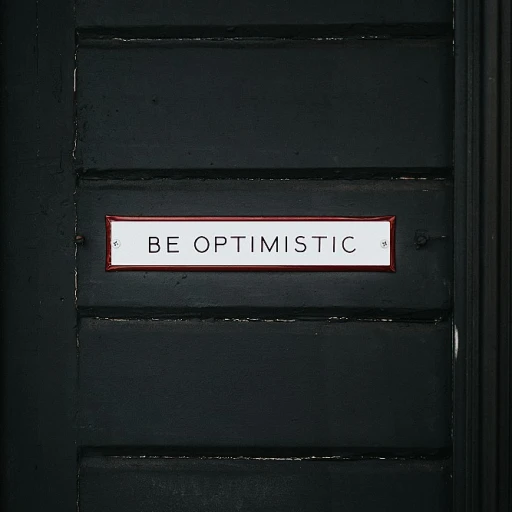
Understanding HR Analytics and Inclusion
The Role of HR Analytics in Fostering an Inclusive Workplace
In today’s diverse and fast-paced business environment, HR analytics has emerged as a crucial tool in promoting inclusion and diversity (i&d) within organizations. SHRM, a recognized leader in the HR field, emphasizes the need for leaders to build inclusive workplace cultures where employees feel valued and respected. HR analytics provides a blueprint for creating such inclusive environments by enabling organizations to measure, track, and improve their diversity and inclusion efforts.
By effectively utilizing HR analytics, businesses can transform their work culture, ensuring that inclusion is not merely a buzzword but a significant aspect of their operations. Inclusion strategies should be built on data-driven decisions that reflect the diverse talents and needs of the workforce. Implementing i&d strategies, guided by insights from analytics, can facilitate meaningful change and accountability among leaders and team members.
Moreover, leveraging analytics helps in identifying gaps in inclusion practices, allowing organizations to make informed decisions that are legally compliant and aligned with executive orders and best practices. This can positively impact diversity, making businesses more inclusive and accretive. As organizations strive to improve their workplace cultures, HR analytics serves as an essential instrument in crafting effective strategies that encompass elements of both inclusion and accountability.
For more information on using HR analytics to enhance your workforce planning and build a culture of inclusion, check out this detailed guide on enhancing workforce planning with human resources forecasting.
Key Metrics for Measuring Inclusion
Defining and Utilizing Inclusion Metrics
Understanding the extensive realm of HR analytics means recognizing that inclusion metrics play a pivotal role in building a thriving workplace culture. Inclusion and Diversity (I&D) leaders often measure inclusion using various key metrics, distilling data into actionable business insights. This approach aids leaders and organizations in constructing a strong I&D strategy that facilitates creating inclusive and legally compliant workplace environments.- Employee Sentiment Surveys: By gathering regular feedback from team members, HR professionals gauge how employees feel regarding diversity and inclusion efforts. These surveys can reveal valuable insights into whether employees perceive the culture as inclusive or if improvements are warranted.
- Representation Statistics: Analyzing the diversity makeup within various levels of the organization, from entry-level to leadership, provides a blueprint for recognizing underrepresentation. It is essential for HR leaders to examine data on gender, ethnicity, and other diversity markers in correlation with those outlined by organizations like the EEOC.
- Retention and Turnover Rates: Investigating these metrics helps HR professionals understand whether diverse employees are staying with the organization or if there are barriers leading to higher turnover rates. Creating a business accretive strategy includes ensuring diversity is a priority in both recruitment and retention.
- Promotion Rate Data: Scrutinizing how often diverse employees are promoted compared to their peers could highlight potential biases in decision making and opportunities for advancement within the workplace.
Challenges in Implementing Inclusive HR Analytics
Overcoming Barriers in Inclusive HR Analytics
Introducing inclusive HR analytics is not without its challenges. Organizations need to address several hurdles before they can effectively measure and foster a truly inclusive workplace culture. The journey requires commitment, awareness, and sometimes, a paradigm shift in how business leaders view diversity i&d (Inclusion and Diversity) within their organizations.
One of the biggest challenges lies in gathering accurate and comprehensive data. This data must reflect the diverse nature of workplace demographics to build an effective i&d strategy. However, legal restrictions, such as those from EEOC (Equal Employment Opportunity Commission) or adherence to executive orders, can complicate this data collection process. Ensuring that data practices remain legally compliant while striving for inclusivity is key to overcoming these barriers.
Beyond legal compliance, there's the challenge of building trust within organizations. Employees need to feel safe and assured that their data will be used to create a positive impact rather than enforce exclusion. This calls for accountability in decision-making processes that leverage HR analytics, reassuring employees that their concerns are heard and addressed constructively.
Cultural resistance also poses a significant challenge. Organizations aiming to integrate inclusive HR analytics must foster a culture that is receptive to change. Leaders play a critical role in shaping this culture. By providing a blueprint for inclusion diversity, businesses can set the stage for building a more accepting and inclusive work environment. To learn more on crafting a robust structure for diverse and inclusive workplaces, refer to our detailed blog post exploring Toyota's approach to human resource analytics, where foundational practices in HR analytics reflect Toyota's commitment to inclusive growth.
Importantly, accountability falls not just on leadership. Team members need to embrace inclusion at every level, ensuring these practices become part of daily operations rather than just executive directives. As recent inclusion conferences indicate, the integration of analytics into i&d requires continuous learning and adaptation.
When organizations address these challenges head-on, they pave the way for a more inclusive workplace culture. This aligns with the overarching goal of i&d leaders—to enhance both business accretive outcomes and employee satisfaction in tandem.
Best Practices for Inclusive HR Analytics
Strategies for Fostering Inclusive Practices in HR Analytics
The importance of creating and maintaining an inclusive work environment cannot be overstated, especially when leveraging HR analytics. Building an inclusive culture starts with a comprehensive i&d strategy that aligns with organizational goals. This involves a commitment from leadership and a clear blueprint for promoting diversity and inclusion across all levels of the organization.- Leadership Commitment: One of the first steps in incorporating inclusive practices in HR analytics is to engage leaders who are committed to i&d. SHRM inclusion initiatives underline the role of leaders in modeling inclusive behavior and setting accountability standards that promote diversity and inclusion in the workplace.
- Data-Driven Decision Making: An emphasis on data-driven decision making can help identify gaps in inclusion. Using metrics linked to the workplace culture, leaders can set clear diversity targets and measure progress over time. The focus should be on metrics that directly affect team members’ experiences and support the development of an inclusive work environment.
- Building Inclusive Technology: Technological tools need to support the analysis of i&d data effectively. This is about creating systems that aid in the identification of patterns or biases in hiring, promotions, and employee engagement.
- Training and Development: Organizations are encouraged to invest in skill-building programs that promote i&d within their teams. Training is not just for leaders but for all employees to ensure a shared understanding of inclusion and diversity. Ongoing education is critical to evolving workplace practices that support inclusion.
- Creating an Inclusive Culture: The SHRM blueprint and the insights from events like the inclusion conference at Gaylord Rockies suggest that building a culture of inclusion requires sustained, intentional efforts from all employees. Cultivating a sense of belonging ensures that employees feel valued, which enhances retention and productivity.
- Legal Compliance and Ethical Standards: Compliance with EEOC guidelines and executive orders is essential, not just as a legal obligation but as a commitment to ethical business practices. Organizations should ensure that their HR analytics initiatives adhere to these standards, thereby promoting a legally compliant and fair work environment.
Case Studies: Successful Inclusion Through Analytics
Illustrating Real-World Success with Inclusive HR Analytics
Understanding how inclusive HR analytics can create a significant impact necessitates examining real-world applications where these practices have been implemented successfully. Organizations that have embraced inclusion and diversity (i&d) strategies have seen substantial positive changes, not only in their culture but also in business outcomes.
One notable case study involves a leading hospitality company that actively participated in an inclusion conference at Gaylord Rockies. The company developed a structured SHRM blueprint designed to enhance workplace culture, making it more supportive and communicative. By leveraging HR analytics, they monitored key diversity metrics and identified specific areas requiring strategic focus, gaining insights that led to effective interventions.
The introduction of legally compliant executive orders within the organization provided a foundation for accountability, ensuring that diversity and inclusion leaders were equipped with the necessary tools for building inclusive policies. This commitment to diversity i&d contributed to a working environment where employees felt valued and empowered, positively affecting morale and retention rates.
In another scenario, a tech company harnessed advanced inclusion analytics to spur transformative change within its teams. By integrating decision-making processes with data-driven insights, the company fostered a clearer understanding of team dynamics, enabling leaders to tailor initiatives that resonate with their specific workplace culture. This approach not only boosted employee engagement but also enhanced overall performance, demonstrating that inclusive practices can be business accretive.
These examples reinforce the importance of building culture through informed choices and strategy. By focusing on inclusive practices within HR analytics, organizations can create a sustainable environment where diverse team members thrive and contribute to collective success.
The Future of Inclusion in HR Analytics
Envisioning the Path Forward
As organizations continue to evolve, the role of HR analytics in fostering inclusion and diversity (I&D) is becoming increasingly pivotal. The future of inclusion in HR analytics is not just about collecting data but about creating a comprehensive blueprint for change. This involves integrating I&D strategies into every aspect of business operations, from decision-making processes to workplace culture.
Leaders in human resources must prioritize building inclusive environments where all employees feel valued and heard. This requires a commitment to accountability and transparency, ensuring that diversity I&D initiatives are not just performative but genuinely transformative. The Society for Human Resource Management (SHRM) has been at the forefront of promoting these values, offering resources like the SHRM blueprint for building inclusive workplaces.
Leveraging Technology and Data
Technology will play a crucial role in shaping the future of inclusive HR analytics. Advanced analytics tools can help organizations identify gaps in their I&D efforts and provide insights into how to address them effectively. By leveraging data, HR professionals can create more legally compliant and equitable workplaces, aligning with executive orders and guidelines from bodies like the EEOC.
Moreover, the integration of AI and machine learning can enhance the accuracy and efficiency of HR analytics, enabling more informed decision-making. This technological advancement will support leaders in creating a culture of inclusion that is not only business accretive but also sustainable in the long term.
Building a Culture of Continuous Learning
To sustain progress in I&D, organizations must foster a culture of continuous learning and improvement. This involves regular training and development programs that equip team members with the skills needed to navigate and contribute to an inclusive workplace. Conferences, such as the inclusion conference at venues like Gaylord Rockies, offer valuable opportunities for HR professionals to learn and register for sessions that enhance their understanding of I&D.
Ultimately, the future of inclusion in HR analytics will depend on the collective efforts of organizations to embrace diversity as a core value. By building a culture that prioritizes inclusion and diversity, businesses can create workplaces where every employee feels empowered to contribute to their fullest potential.













